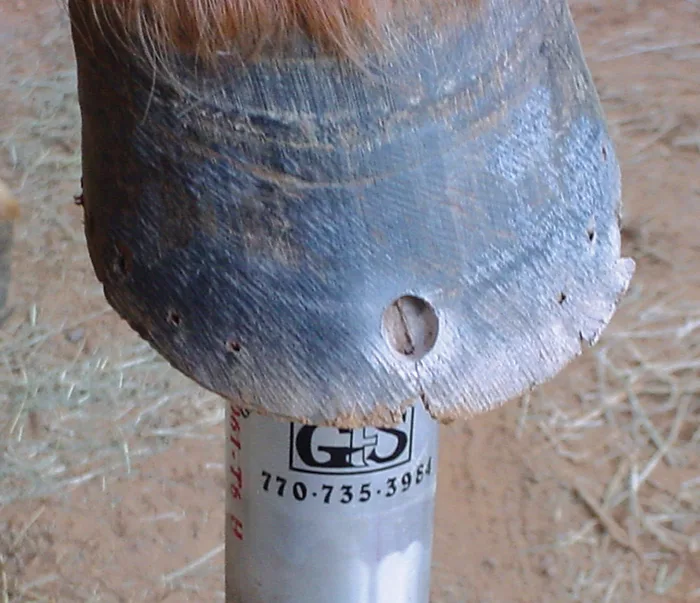American Farriers Journal
American Farriers Journal is the “hands-on” magazine for professional farriers, equine veterinarians and horse care product and service buyers.

DRILLING FOR BETTER HOOF HEALTH. John Halko has found drilling a hole in a hoof wall at the top of an area that is infected with white line disease exposes the infection to air and helps arrests its development. This hole was intentionally drilled too low. If the infection is higher than the hole, the hole can either be enlarged, or a second one can be drilled directly above it.
White line disease goes by several names. Seedy toe, yeast infection and wall separation are just a few. Not everyone agrees as to the exact cause of white line disease, but it does appear to be anaerobic in nature. Once the affected area is exposed to the air, the condition will usually be arrested and the affected area eventually grows out with the hoof wall.
Treatment has traditionally been to dig out the infected area with a small pick or Dremel-type tool and then treat the affected area with some form of liquid or creamy chemical. The chemical can be any of the traditional off-the-shelf preparations such as Fungidye, Merthiolate, formalin, White Lightning or various thrush medicines.
Often, these remedies will stop the progress of the infection. Even very caustic solutions like gasoline or turpentine have some temporary effect. Feed additives have an effect as well.
Sometimes the disease is very advanced or will not respond to traditional remedies. If a relatively large area — say 2 or 3 square inches — is involved…